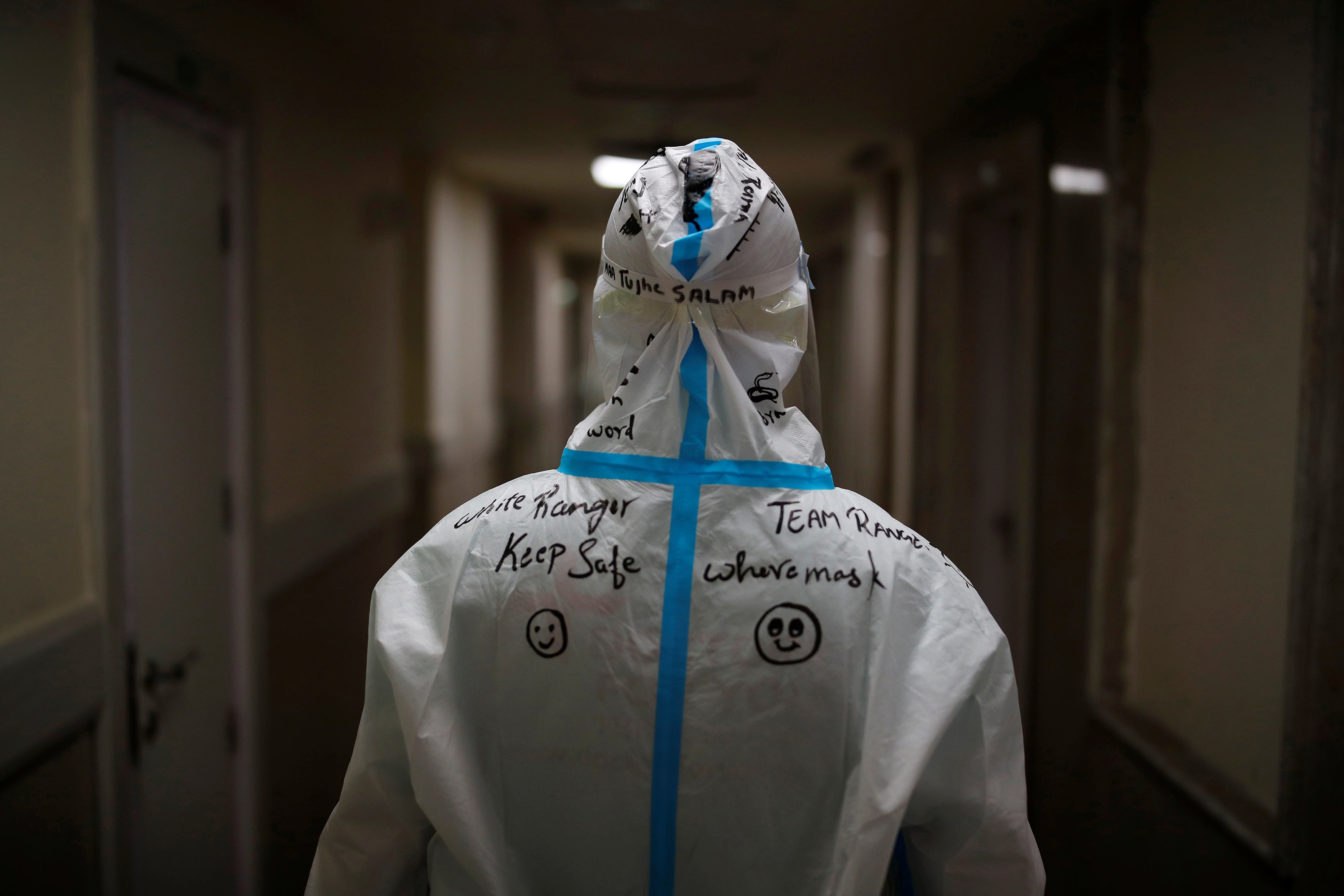Are more young people dying from coronavirus in India?
Reports suggest that more young people are dying in India’s second wave than its first, but is this the full picture?

India remains gripped by a deadly second wave of coronavirus, which claims thousands of lives each day. On Saturday, deaths rose by 4,194 in the south Asian country, while more than 250,000 new cases were reported.
Dr VK Paul, who sits on the Indian government’s Covid-19 management panel, said that current case rates have “stabilised” – daily cases exceeded 400,000 in early May amid an oxygen shortage – but added that India still has a “long way to go”.
The country’s healthcare system remains overwhelmed, and its vaccination rollout has been relatively slow. And, amid this ongoing crisis, there have been reports that more young people without known underlying health conditions are dying than in the country’s first wave. But does this show us the full picture?
One doctor told the Times of India that the majority of Covid-19 patients are under 60, and that many are dying.
“We’re seeing a higher number of young adults in this wave — 60 to 70 per cent are younger than 60, of whom more than half are below 45”, Dr Reshma Tewari, director at Gurgaon’s Artemis hospital told the newspaper.
“For those in ICU, deterioration is often rapid with many requiring ventilator support and aggressive treatment. Mortality in this situation in ICUs is close to 20 per cent,” she added.
The Times of India have also reported that in some states, such as India’s southernmost state, Tamil Nadu, the growth rate of deaths was the largest among people in the 31 to 40 group (37%) between January and May this year, and was similarly large among 20 to 30 year olds (31%).
But the number of deaths in these groups remains relatively small compared to older people and those with underlying health conditions: in the hundreds, while the total number of deaths were in the thousands.
There are, moreover, several factors that may be contributing to this growth.
Firstly, relatively few people have been vaccinated in India: around 10 per cent of its adult population have received a single dose, and about three per cent have received two, according to the latest figures. Those under 45 are less likely to be vaccinated than older people, and are therefore more likely to have lower immunity.
“Deaths among young adults are because of their high mobility and low immunity as they are not vaccinated yet,” Dr Jayan Panda, Odisha’s technical adviser on Covid told the Times of India.
India also has a relatively young overall population, with a median age of 27. This, coupled with the increased transmissibility of the new variant, could put them at a slightly greater risk than in the first wave.
The India variant, B.1.617.2, could be up to 50 per cent more transmissible than the UK “Kent” variant, or B.1.1.7, according to the British government’s scientific advisers, although scientists have said that it’s unclear what their relative prevalence are in India.
“While it’s almost certainly true B.1.617 is playing a role, it’s unclear how much it’s contributing directly to the surge and how that compares to other circulating variants, especially B.1.1.7,” Kristian Andersen, a virologist at the Scripps Research Institute in San Diego, said.
Another possible factor is silent hypoxia, or the partial loss of oxygen on the blood going unnoticed by people who don’t experience symptoms.
If a person doesn’t experience symptoms such as shortness of breath, they are less likely to enter intensive care quickly and will ultimately be harder to treat. However, the phenomenon has not conclusively been linked to younger patients.
Although these circumstances have led to a growth in the percentage of deaths in young people in some states like Tamil Nadu, overall statistics do not suggest that the situation is much worse for young people now than it was in 2020 in India.
During the first wave, 31 per cent of patients were under 30 according to Dr Paul – by May this year, that figure had only increased to 32 per cent.
Similarly, 20 per cent of deaths in 2020 were people aged under 50; by May 2021 it stood at 19 per cent.
Subscribe to Independent Premium to bookmark this article
Want to bookmark your favourite articles and stories to read or reference later? Start your Independent Premium subscription today.

Join our commenting forum
Join thought-provoking conversations, follow other Independent readers and see their replies